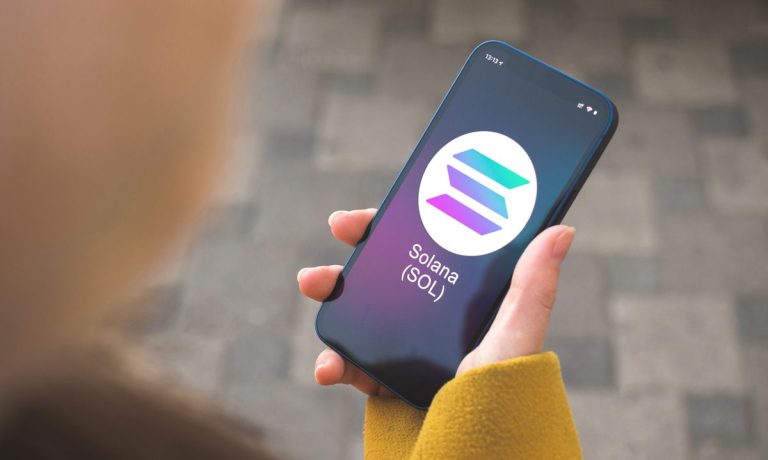
Solana Labs announced in a Tuesday (Feb. 1) blog post a new point-of-sale (POS) payment product that lets merchants accept the USD Coin (USDC) stablecoin and other cryptocurrencies with tiny fees nearly instantly.
The developer of the Solana blockchain is the leading competitor of Ethereum, offering cheaper, faster and more scalable transaction processing.
See also: What Is Solana?
Solana Pay is the “next generation of merchant payment and commerce rails,” offering “low cost, instant settlement for online and in-store payments,” Solana Labs said in an announcement. It promises “immediate” settlement, fees of fractions of a cent, and scalability up to 60,000 transactions per second (TPS), rivaling Visa’s 65,000 TPS.
The new product uses QR codes to enable payment in a direct peer-to-peer (P2P) transaction between the consumer and merchant, using a digital wallet rather than a fee-charging intermediary like a bank, credit card or Apple Pay.
“We believe this will pave the way for a future where digital currencies are prevalent and digital money moves through the internet like data — uncensored and without intermediaries taxing every transaction,” the company said in the blog post, which was written by Solana Labs Head of Payments Sheraz Shere, a former head of Partnerships at Google Wallet and, until July, it’s artificial intelligence (AI) and machine learning (ML) services lead. “Merchants have been able to accept cryptocurrencies for years, but acceptance usually means settling in non-stable currencies, swapping out one intermediary for another, and duct-taping together square pegs and round holes.”
Launch partners include USDC-issuer Circle, digital payments platform Checkout.com, mobile payments firm Citcon, and major cryptocurrency exchange FTX. Another partner is Phantom wallet, which announced a $109 million funding round and the release of its software cryptocurrency wallet Monday (Jan. 31).
Stablecoin Focus
In January, a Bank of America client note said Solana has the potential to become the “Visa of the digital asset ecosystem,” pointing to a focus on ease of use as well as scalability and low fees.
Read more: BoA Sees Solana Blockchain as ‘Visa of Digital Asset Ecosystem’
While Solana Pay can use Solana’s native SOL cryptocurrency, or any other token built on is blockchain, the launch’s focus is on Circle’s USDC, the No. 2 stablecoin. USDC is primarily built on Ethereum, but it has native tokens on several other blockchains, including Solana. The version on this chain currently has a market capitalization of $4 billion out of USDC’s total $50 billion.
“The launch of Solana Pay is a critical step toward broadening access and usage for merchants and customers who want a faster, more efficient payment option for everyday commerce,” Circle CEO Jeremy Allaire said in a separate blog post.
“Implementing Solana Pay is as simple as enabling a QR code on a merchant’s website or at the point of sale, allowing merchants large and small, eCommerce platforms, POS providers, and a broad array of payment service providers to easily accept and transact with USDC for everyday purchases, providing customers with a superior payments experience powered entirely by blockchain technology,” Circle added. “What’s more, Solana Pay creates the building blocks for a re-imagined merchant-to-consumer relationship that is truly peer-to-peer.”
Connections Beyond Payment
Using Solana Pay opens a direct communication channel with a customer, providing merchants with consumer loyalty and engagement tools. The developer said it will soon allow merchants to send users nonfungible tokens (NFTs) in addition to more traditional but blockchain-enhanced loyalty programs.
“Even as our world has digitized and ways to pay have proliferated, the dance between merchants, intermediaries, banks and technology has only become more fragmented,” said Shere in the Solana blog post. “Threading the needle on a cohesive payment experience that rewards loyalty, drives repeat visits, and doesn’t cost an arm and a leg simply never happened.”
He gave the example of a sneaker buyer walking into a store to buy the hottest new release. Aside from the sneakers, Shere said, the Solana Pay user walks out with two NFTs in her wallet. One is a digital version of the sneaker usable by her metaverse avatar, and another is a way into the merchant’s “exclusive online community of verified sneaker-lovers” — meaning loyalty program.
See also: Experiential Marketing Meets Social Commerce in the Metaverse
“Nine months later, the next version of her favorite sneaker drops,” he said in the post. “Her digital wallet has a new offer reminding her of their availability at your store, along with a personalized offer on new laces she can’t find anywhere else. I’ve heard versions of this vision pitched to merchants large and small many times.”
These “futuristic promises in payments — simple, seamless, connected — haven’t materialized,” he added.